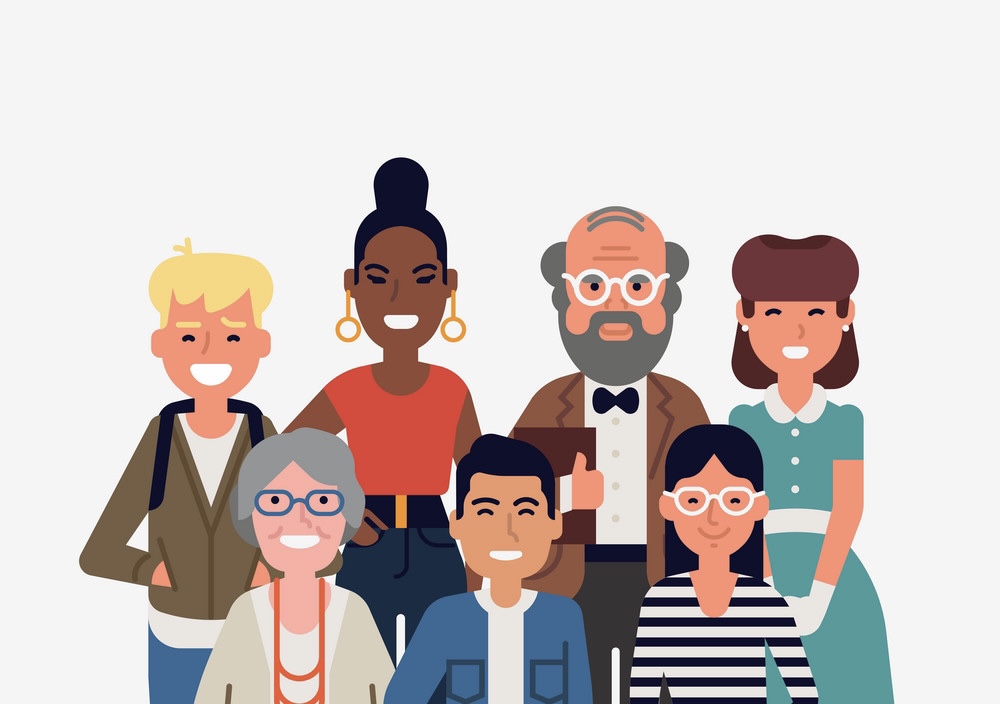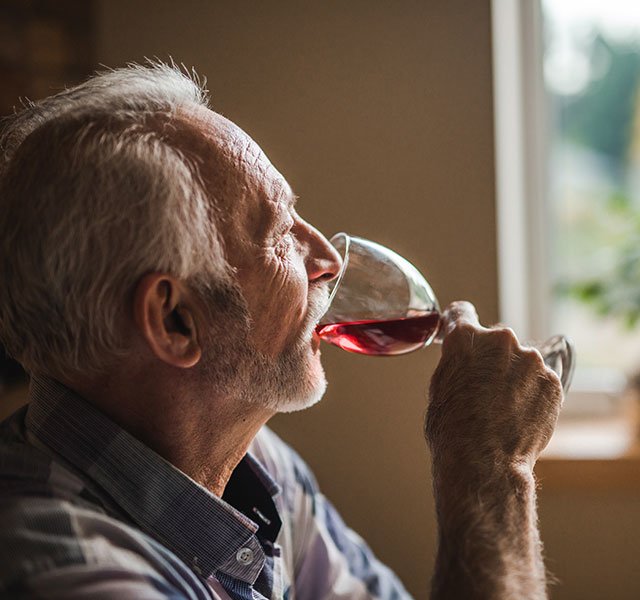I often point out that age has far less to do with compatibility than we think it does. There are exceptions, of course: reproduction is largely a young person’s game, along with extreme sports. Age differences can’t be wished away, nor should they be, but hanging out mainly with people our own age has more to do with comfort and inertia than with actual affinity, and the habit costs us.
I still think that’s the case. But a question that came into my Yo, Is This Ageist? blog tempered my thinking. It came from a woman in her late 50s who belongs to a cancer survivors’ group.
“The admins regularly schedule events ‘for survivors under 40’ or for ‘young survivors,’” she wrote. “So far they’ve involved trivia games and making appetizers, which would be interesting for just about any adult. I politely pointed out that what they were doing was ageist and suggested they reconsider, but they went radio-silent. It’s so frustrating and demoralizing to be left out simply because of my age. Do I just let this go?”
My first reaction? Hell, no! Perhaps the admins were assuming younger members wouldn’t want to hang out with older ones. Even if so, better to call it out, because when we remain in age (and race and class) silos, prejudice persists. Besides, wouldn’t it make more sense to form affinity groups around commonalities like shared diagnoses or treatments?
But not so fast. Before responding, I had the good sense to query two thoughtful, younger friends, also breast cancer survivors. Their responses took me by surprise.
“Yes, it’s helpful for people who identify as cancer survivors to join all different kinds of groups,” responded Dorian, who joined a bunch of them. “They were mostly older women (because that’s the biggest demographic), weeping because they might not have grandchildren, while at 26 I was wondering whether I’d even have a child. Or a career, or a life.”
It was a group for young adults and partners that Dorian found head and shoulders more helpful than any other. Members had different types of cancers, treatments, and prognoses. The only thing they had in common was the emotional experience of being a young person with cancer, and in the end, for Dorian, that mattered most.
“They addressed things like dealing with parents swooping in at a time when you’re trying to establish independence, breastfeeding, and the future [emphasis hers]. One of the things cancer takes away from you is your future, and I think your perspective on that may be different as a 20-something than as a 60-, 70-, or 80-something.”
Pam concurred, summing up the issue “in one word: envy. Younger women diagnosed with breast cancer are envious, for many reasons, of women who’ve had more time to establish their lives before this disease creates chaos.”
She found it helpful to sit with women of all ages, but also joined the Young Survival Coalition for women diagnosed at age 40 or younger. “It was, and continues to be, a very important experience,” she wrote. Members were desperately trying to figure out how the diagnosis would affect their fertility, eligibility for adoption, and employment and financial prospects.
“Cancer can be like a bomb hitting your life,” she explained, “and how much you’ve been able to prepare does make a difference.” And while Pam thought all survivors should have the chance to play trivia and make appetizers, “if some … groups are just for youngers, I hope you can understand why.”
I do now. Even if I didn’t, I’d respect these younger women’s perspectives because it’s their truth. In any case, their response raised new questions. I posed one of them to Lori, the woman whose letter kicked this off: Would she like the option of joining a group of older survivors?
“I’m just not seeing any advantages for us older people beyond specific topics,” she replied. A group for people who were losing partners of many decades might be for olders. Another, for fertility issues, would target younger people. A third, for caregivers, would be age-agnostic. Trivia and appetizers, optional. Clearly the admins could have done a better job of addressing her query, but that was just the tip of just one iceberg.
I reflected some more. Like many age-related questions, the deeper I went, the more complicated and interesting it became. How could it be otherwise when trying to distinguish what’s rare and what’s shared in the context of the one experience—growing older—every human shares? Answers may vary, as they say, depending on the circumstances, number of people, culture, and on and on. But I did arrive at a couple of general observations:
- Affinity seems to relate more to life stage than to age: to shared experiences and transitions rather than to the chronological age at which they occurred.
- The connection between life stage and age is far from fixed.
- The value of same-age groups is not evenly distributed across the lifespan.
Chronological closeness is more significant early on, when even a small age gap looms large because each year makes up a greater percentage of our time on Earth. This limits perspective and point of view: our grasp of our capacities and potential. As Pam and Dorian poignantly attest, time itself is more salient for young people, especially ones confronting a life-threatening diagnosis. This makes age a better predictor of genuine affinity among youngers than … among olders.
For those fortunate enough to move into adulthood, chronological age becomes less salient over time. We age at different rates—physically, socially, developmentally—and become more different from each other. The older the person, the less their age reveals about them.
Consequently, as the booster stages of reproductive capacity and peak physical performance detach from the rocket of life, age and stage also disengage.
As trajectories become more diverse, so do the points at which we enter various life stages—if, indeed, we enter them at all. No doubt there’s an average age range for people immersed in toddler-wrangling, or transitioning genders, or starting businesses, or learning to sing or code or cook. But loads of people do none of those things, or some of them, or stop and start. Examples of age-based affinity groups may come readily to mind: new moms, perhaps, or club-goers. But we can become mothers at 15 or at 50, and you’ll find olders on the dance floor if you look.
Age-diverse groups would be far more numerous if:
- we didn’t tend to head for people our age in social situations, because we falsely assume that’s who we’ll have the most in common with, or that we won’t be welcome otherwise,
- we weren’t barraged by ageist clickbait about what’s “age-appropriate.” (For adults, there’s no such thing.),
- we weren’t brainwashed by an ageist culture into believing age shapes affinity far more than is actually the case—far less than class, race, gender and ethnicity, not to mention personality
Similar-age groups are socially sanctioned. They’re familiar. It’s easier to hang with people who look like us than to bust out of age- or race-based silos. But “age fit,” like “culture fit,” which is workplace code for “people like me,” is more about habit and comfort than actual affinity. That overlap is greater among younger people, because school is an age-sorting mechanism and because they’ve had less time to develop diverse interests and perspectives.
Age is never irrelevant. It is a key identifier lifelong, connecting us forever to people who’ve lived through the same historical events and share cultural references. At times, this matters most. It’s the point of reunions, for example. The pleasure of being with people we’ve known all our lives is acute and grows more precious over time.
But genuine affinity based on chronological age is the exception, not the rule. If that seems improbable, it’s because so few of us have friends much older or younger than ourselves, not because age segregation is “natural” or destined. The more time we spend in mixed-age company, the more evident that fact becomes. So if most of your friends are your age:
- Think of something you like to do and find a mixed-age group to do it with. Strike up a conversation with the oldest or youngest person in the room.
- Question age-based assumptions. Yes, someone might look askance across an age gap—jerks are everywhere—but they’re a small minority and deserve to be ignored.
- Question habit. (Why, for example, does it seem so important to learn the age of a new acquaintance?) If everyone on the team or the guest list is the same age, ask why. Occasionally there’s a legitimate reason, but not very often.
- Push back against age apartheid, personally and professionally.
The sooner we emerge from our same-age silos, the richer our lives become, the more accurate and nuanced our grasp of what it means to grow older, and the more attainable the solidarity these times demand.



